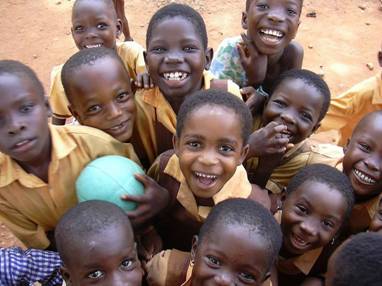Institutional factors
 As
we saw in the introduction to this section, it is no good just
improving the factors of production. A country also needs a good quality infrastructure
to support them. This means having a suitable financial, legal and
social institutional framework. Important institutional factors are
therefore:
As
we saw in the introduction to this section, it is no good just
improving the factors of production. A country also needs a good quality infrastructure
to support them. This means having a suitable financial, legal and
social institutional framework. Important institutional factors are
therefore:
- The banking system - a good banking system provides the financial infrastructure that enables businesses to flourish and grow. This makes it an important driver of economic growth. Often such a system is lacking in developing countries.
- The educational system - this could also be included under the human resources heading above. Growth requires a high quality, well educated workforce. This in turn needs a good educational system to provide for as many people as possible.
- Health care - a healthy workforce and population is just as important as a well educated one. This means a good health care system.
- Infrastructure - economic activity needs an infrastructure to support it. Roads, ports, telecommunications networks - all these are vital elements to support economic development.
- Political stability - without political stability there will not be certainty and businesses require certainty to enable them to plan for the future. A stable political environment is likely to be a key factor in determining whether or not businesses are prepared to undertake major investment projects.
However, in some developing countries the infrastructure, governance and financial and social institutions present are poor and present significant barriers to growth and development. The next section highlights some of the barriers to growth and development associated with poor governance and institutions. Many of the issues raised will be discussed in more detail later in the pack.
As we have seen many developing countries have a poor institutional framework. They may face a range of barriers to growth. These may include:
- Ineffective taxation structure - in many developing economies, governments face enormous problems in collecting tax. These may be physical problems (actually accessing the communities in rural areas) or simply data information problems - poor records of the population. This makes it very difficult to collect tax revenue and low tax revenue makes it difficult to develop the required institutions.
- Lack of property rights - many developed economies lack a well-developed system of property rights. Property is allocated on traditional or tribal grounds or ownership is perhaps even unknown. This can prevent economic development as growth is stimulated by the trading of the factors of production.
- Political instability - if there is political instability then it is very difficult for economic activity to develop and grow. If businesses are to grow, then they need stability and a reasonably consistent or predictable political structure. Without this, development becomes a lot more difficult as there will be an unwillingness to engage in capital investment.
- Corruption - this almost speaks for itself. Corruption makes development difficult and can certainly act as a barrier for overseas firms investing in an economy.
- Unequal distribution of income -income distribution will tend to widen as economies grow. This can act as a barrier to growth. Those on the lowest income levels will often have the highest marginal propensity to consume and therefore if they get an increase in their incomes, they are likely to spend it. This will help drive demand growth. However, if growth simply means that the rich get richer (and perhaps even move their money overseas) this will act as a constraint on development.
- Formal and informal markets - in the developed world most activity takes place in formal markets - that is organized markets where money is exchanged. However, in the developing world much of the economic activity takes place in informal markets. No money is exchanged and economic activity goes unrecorded.
- Lack of infrastructure - a good quality social infrastructure is vital for economic development, but in the developing world the infrastructure is often very poor. This is a significant barrier to growth and development and we look at this in more detail below.